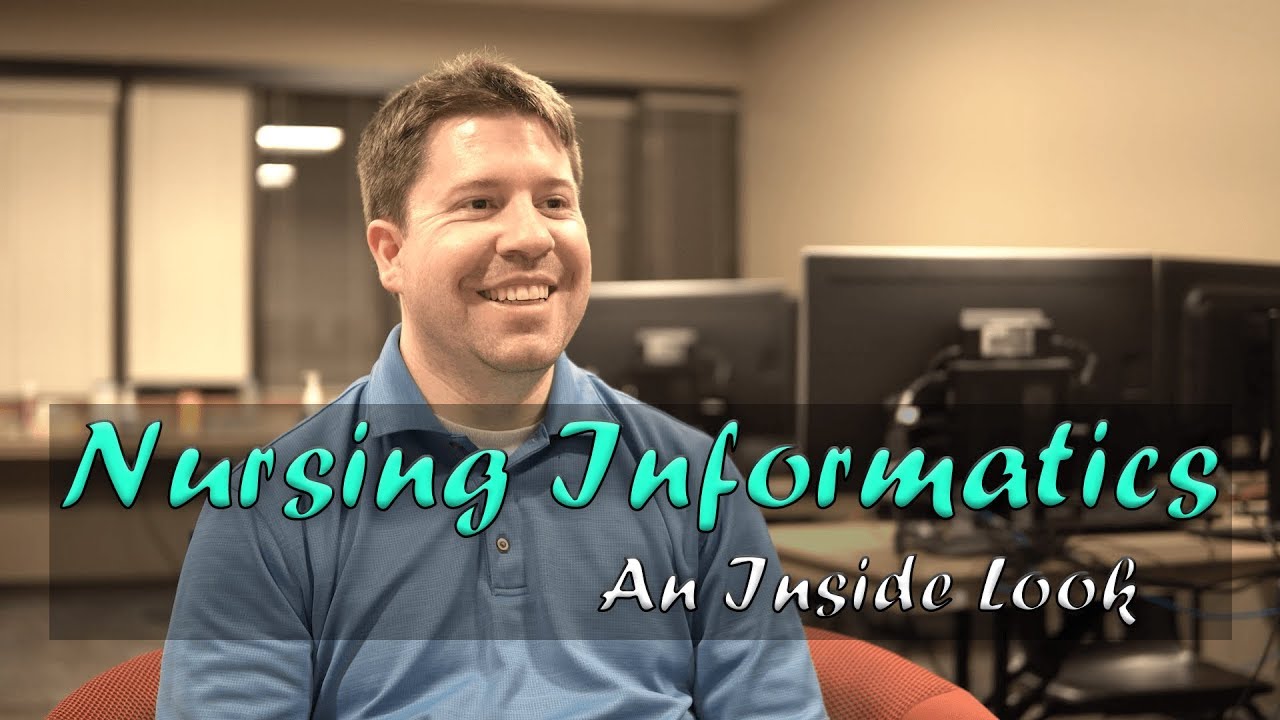N-110 Nursing Informatics Lecture 2: Issues in Informatics
Summary
TLDRThis video lecture delves into nursing informatics, a specialty that emerged in the 1980s, combining nursing, information, and computer sciences to manage nursing data effectively. It discusses the importance of understanding data structures, information management, and technology in nursing practice. Addressing the nursing shortage and the need for improved patient safety through technology, the lecture highlights the significance of automation, computerized prescriber order entry (CPOE), barcode-enabled point-of-care technology, and standardization in healthcare data. It also emphasizes the necessity of safeguarding patient data and building dependable systems in nursing informatics.
Takeaways
- 😀 Nursing informatics is a sub-specialty that combines nursing, information, and computer sciences, managing nursing data into useful information for practice.
- 💻 The field emerged in the 1980s in the U.S. and involves the application of information structures, processes, and technology in nursing.
- 🔍 Understanding various disciplines like linguistics, organizational dynamics, and cognitive science is crucial for designing effective nursing information systems.
- 🚑 The development of nursing informatics was driven by the need to address nursing shortages, improve patient safety, and manage complex documentation and information technology needs.
- 👵 An aging nursing workforce and the necessity to adapt to technological advancements are key reasons for the growth of nursing informatics.
- 💊 A primary goal of nursing informatics is to resolve medication errors and communication issues to enhance patient safety.
- 🤖 Automation in nursing informatics helps save time and resources by streamlining repetitive tasks and improving efficiency.
- 💹 Computerization of hospital documents has been shown to produce positive outcomes, including reduced paper expenditure.
- 📋 The implementation of Computerized Provider Order Entry (CPOE) systems in developed countries has significantly reduced medication errors.
- 🔑 Standardization of healthcare data is essential for efficient processing and communication between computer systems in the medical field.
- 🛡️ Protecting the privacy and confidentiality of patient data is a fundamental aspect of nursing informatics and system development.
Q & A
What is the definition of nursing informatics?
-Nursing informatics is defined as the combination of nursing, information, and computer sciences to manage and process nursing data into information and knowledge for use in nursing practice.
When was nursing informatics identified as a sub-specialty in the United States?
-Nursing informatics was identified as a sub-specialty in the United States during the 1980s.
What is the significance of understanding different hardware and software in nursing informatics?
-Understanding different hardware and software is crucial in nursing informatics as it is where information structures, processes, and information technology are applied in managing nursing data.
Why was nursing informatics developed as a specialty?
-Nursing informatics was developed as a specialty to address the nursing shortage, improve patient safety, resolve errors, and cope with an aging nursing workforce by utilizing available technology.
What is the role of automation in nursing informatics?
-Automation in nursing informatics involves letting computers perform repetitive instructions, which saves time and effort, and can potentially save lives and resources by streamlining organizational processes.
What is the purpose of Computerized Provider Order Entry (CPOE) in healthcare?
-CPOE is a system that uses direct entry of medical orders electronically into a system that transmits those orders electronically to the concerned department, with the aim of reducing medication errors and improving patient safety.
Why is standardization important in healthcare data?
-Standardization is important in healthcare data to reduce ambiguity in data communication, streamline the exchange of information between computer systems, and achieve compatibility between systems for efficient processing.
What are the four broad classes of message format that have emerged in healthcare data standards?
-The four broad classes of message format are medical device communication, digital imaging communication, administrative data exchange, and clinical data exchange.
What is the significance of Nursing Minimum Data Set (NMDS) in nursing informatics?
-NMDS provides a standard data set for nurses to enter patient data into a system, ensuring that the data is useful, readily collectable, non-duplicative, and respects patient confidentiality.
What are some challenges faced when implementing barcode-enabled point-of-care technology in medication administration?
-Challenges include nurses finding it difficult to deviate from traditional medication administration methods and the potential for nurses to circumvent the point-of-care technology.
How can the implementation of nursing informatics improve patient safety?
-The implementation of nursing informatics can improve patient safety by reducing medication errors, avoiding miscommunication, and ensuring that the right drug is administered to the right patient at the right dose and time.
Outlines

This section is available to paid users only. Please upgrade to access this part.
Upgrade NowMindmap

This section is available to paid users only. Please upgrade to access this part.
Upgrade NowKeywords

This section is available to paid users only. Please upgrade to access this part.
Upgrade NowHighlights

This section is available to paid users only. Please upgrade to access this part.
Upgrade NowTranscripts

This section is available to paid users only. Please upgrade to access this part.
Upgrade NowBrowse More Related Video

Nursing Informatics Overview

HISTORY OF NURSING INFORMATICS (International setting)

Nursing Informatics | An Inside Look

N-110 Nursing Informatics Lecture 3: Informatics Theory and Practice Applications

Diabetes Mellitus Pathophysiology & Nursing | Diabetes Nursing Lecture NCLEX | Type 1 & Type 2

KULIAH ONLINE: KONSEP DASAR KESEHATAN JIWA
5.0 / 5 (0 votes)